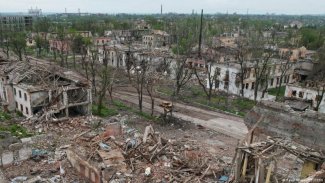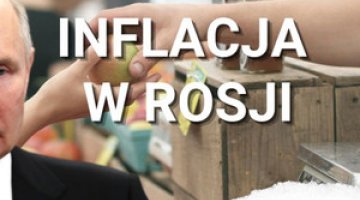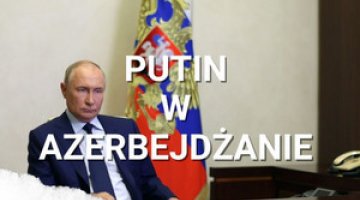Russia’s attack on Ukraine: day 91

The Ukrainian side reports an increase in the intensity of operations at the junction of the Kharkiv, Donetsk and Luhansk oblasts. Lyman has been partially captured by the aggressor’s forces, which are to prepare for a further strike in the south-eastern direction – on Siversk–Bakhmut. The defenders are trying to prevent the seizure of the Lysychansk–Bakhmut road section in the Donetsk Oblast, halting the assaults in the Biolohorivka–Nahirne–Berestove area. The main Ukrainian grouping near Sievierodonetsk has been split into two parts – Lysychansk–Sievierodonetsk and Hirske–Zolote – which the enemy is trying to surround. The Russians are also advancing towards Bakhmut from the south-east (they were stopped in the area of the village of Vidrodzhennya). Attempts to break through Ukrainian defences were made in the rest of the Donetsk Oblast and, after a break of several days, on the border of the Kherson Oblast with the Mykolaiv (Tavriiske) and Dnepropetrovsk (Mykolaivka) oblasts. The air and artillery of the aggressor do not cease their attacks on the enemy positions and their hinterland in all directions.
The invaders are reconstituting a strike group in the areas bordering the Chernihiv and Sumy oblasts. Local Ukrainian sources report that, for the time being, there are no signs of preparations for an attack, but the artillery shelling of the defenders’ positions continues. The Operational Command ‘South’ draws attention to the strengthening of the enemy on Snake Island and the preparation of provocations with the use of seized units of the Ukrainian fleet.
The Russian authorities have shortened the process of passportization of the population in the occupied territories. On 25 May, Vladimir Putin signed a decree on simplifying the procedure for granting Russian citizenship to Ukrainians from the Zaporizhzhia and Kherson oblasts. The document stipulates that applications by residents of these territories for its granting should be considered for no longer than three months. In Mariupol, information was disseminated about the possibility of acquiring Russian citizenship without first obtaining a passport of the so-called Donetsk People’s Republic, but obtaining new documents requires travel to Russia. The Ministry of Foreign Affairs of Ukraine considered the decree illegal and grossly violating the sovereignty and territorial integrity of the invaded country and the norms and principles of international law.
The claim that the Kremlin is accelerating the annexation scenario towards Donbas is confirmed. The head of the so-called Donetsk People’s Republic, Denis Pushilin, admitted that once the entire Donetsk and Luhansk oblasts have been seized, a ‘referendum’ will be held on the inclusion of these areas into Russia. He added that its outcome is obvious.
In occupied Mariupol, the invaders have extended the school year until 1 September and are preparing schools to implement the Russian curriculum. This is primarily aimed at indoctrinate the local youth. Throughout the summer, they will study the Russian language and Russian literature and history. The occupiers plan to open nine schools, but so far only 53 teachers have been found willing to work.
Deputy Foreign Ministry of the Russian Federation Andriy Rudenko announced that Russia is ready to organise a humanitarian corridor for the sea transport of grain from Ukrainian ports on the Black Sea and the Sea of Azov. However, he made the realisation of this proposal conditional on the enemy de-mining them and the lifting of sanctions imposed by the West. In response, the head of Ukrainian diplomacy accused Moscow of deliberately seeking to create a world hunger crisis and called on the international community not to give in to blackmail. Ukraine’s Deputy Minister of Agrarian Policy Taras Vysotsky said that the use of alternative road and rail routes to sea transport by Western European countries would allow only 1.5 million tonnes of grain a month to be exported from the country. In his opinion, it would take at least a year to transport the 22 million tonnes of grain stored in local warehouses. According to Vysotsky, the only way out is to unblock Ukrainian ports militarily or to create international convoys to escort sea vessels transporting grain. During the Davos Forum, President Volodymyr Zelensky called for the creation of an organisation of agricultural exporters, whose task would be to counteract crises related to the interruption of supplies.
During his address to the nation, Zelensky criticised the attitude of some Western countries advocating the quickest possible end to the war in Ukraine. In his opinion, the opinions expressed by some Western politicians and diplomats on the need for Kyiv to allow certain territorial concessions are a repetition of Europe’s misguided policy towards Nazi Germany in the run-up to World War II and will not protect the West from Putin’s aggressive plans. In turn, Foreign Ministry chief Dmytro Kuleba said Ukraine would not make the mistake of agreeing to freeze the conflict again.
Commentary
- In recent days, the invaders have made progress in the Luhansk Oblast (they control 95% of its area), which should be linked to the defenders’ depletion of forces, especially with growing supply problems. However, the aggressor is still unable to break through Ukrainian positions in the north-western part of Donetsk Oblast. On other directions, its activity remains significantly limited. The information that the Russians have removed from storage a batch of worn-out T-62 tanks dating back to the 1960s (probably around 30) and transported them to the Zaporizhzhia Oblast indicates that they are preparing actions of a stabilising-defence nature (since the end of the Soviet intervention in Afghanistan, T-62s have proved their worth in subsequent Russian conflicts as fire points at fortified positions). This would mean that in the near future the invaders will focus on capturing the whole of Donbas and securing a controlled land bridge with Crimea.
- The observed expansion of the Russian grouping on the border with the oblasts of Sumy and Chernihiv, as well as the maintenance of a large contingent in southern Ukraine (more than 50 battalion tactical groups according to US assessments), allow us to assume that Moscow is leaving itself considerable leeway with regard to further military action. The forces in the north should still be regarded primarily as binding the enemy’s grouping in the Kyiv–Chernihiv–Sumy area and thus preventing it from being used in the combat areas in the south and east of the country, and a renewed assault on the capital is unlikely in the coming months. A Russian offensive in the northern (Zaporizhzhia and/or Kryvyi Rih) or western (Mykolaiv/Odesa) direction, on the other hand, remains highly likely, and its implementation will be determined by military developments in the Donetsk Oblast.
- The Ukrainian government is actively trying to counter the increasingly frequent opinions expressed by Western politicians and supported by the Kremlin about the need to end the war in order to avoid further casualties and crises over access to energy resources and agricultural production. Kyiv’s unbending stance towards the enemy’s demands is the result of its belief in the possibility of military victory and the steadfastness of its people. According to a mid-May public opinion poll published by the Kyiv International Institute of Sociology, 82% of Ukrainian citizens are opposed to any territorial concessions, and only 10% agree to bring the conflict to an end as quickly as possible at the price of giving up part of the country’s territory.




